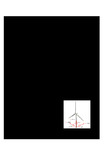Propeller and vortex ring state for floating offshore wind turbines during surge
| dc.contributor.author | Kyle, R | |
| dc.contributor.author | Lee, Yeaw Chu | |
| dc.contributor.author | Früh, W-G | |
| dc.date.accessioned | 2021-05-07T09:23:23Z | |
| dc.date.available | 2021-05-07T09:23:23Z | |
| dc.date.issued | 2020-08 | |
| dc.identifier.issn | 0960-1481 | |
| dc.identifier.issn | 1879-0682 | |
| dc.identifier.uri | http://hdl.handle.net/10026.1/17097 | |
| dc.description.abstract |
Surge motion of a floating wind turbine can lead to conditions where the rotor moves backwards faster than the wind, leading to propeller-like conditions or vortex ring state (VRS). The effect of surge on the thrust of a floating turbine was investigated with OpenFOAM for conditions favourable to propeller and vortex ring state. Due to lower blade velocities and larger blade twists, a region of negative thrust is shown to extend spanwise from the blade root towards the tip signifying propeller state. Predictions that strong waves with low/moderate wind speeds leads to propeller-like conditions were confirmed for a representative surging simulation with a 9.4 m amplitude in waves with an 8.1 s period and 7 m/s wind speed. A negative thrust for the entire rotor, through the combination of an inboard region of negative and outboard region of small but still positive thrust, was observed during the expected part of the surging cycle. VRS was observed with blade tip-vortex interaction and root vortex recirculation due to the duration with a negative relative rotor velocity being similar to the blade passing period, inhibiting vortex advection downstream. This work explains and demonstrates the causes of propeller state and VRS for floating turbines. | |
| dc.format.extent | 645-657 | |
| dc.language | en | |
| dc.language.iso | en | |
| dc.publisher | Elsevier BV | |
| dc.subject | Floating wind turbine | |
| dc.subject | Surge motion | |
| dc.subject | Propeller state | |
| dc.subject | Vortex ring state | |
| dc.subject | CFD | |
| dc.subject | OpenFOAM | |
| dc.title | Propeller and vortex ring state for floating offshore wind turbines during surge | |
| dc.type | journal-article | |
| dc.type | Journal Article | |
| plymouth.author-url | https://www.webofscience.com/api/gateway?GWVersion=2&SrcApp=PARTNER_APP&SrcAuth=LinksAMR&KeyUT=WOS:000537825800055&DestLinkType=FullRecord&DestApp=ALL_WOS&UsrCustomerID=11bb513d99f797142bcfeffcc58ea008 | |
| plymouth.volume | 155 | |
| plymouth.publication-status | Published | |
| plymouth.journal | Renewable Energy | |
| dc.identifier.doi | 10.1016/j.renene.2020.03.105 | |
| plymouth.organisational-group | /Plymouth | |
| plymouth.organisational-group | /Plymouth/Faculty of Science and Engineering | |
| plymouth.organisational-group | /Plymouth/Faculty of Science and Engineering/School of Engineering, Computing and Mathematics | |
| plymouth.organisational-group | /Plymouth/Users by role | |
| plymouth.organisational-group | /Plymouth/Users by role/Academics | |
| dcterms.dateAccepted | 2020-03-18 | |
| dc.rights.embargodate | 2021-5-15 | |
| dc.identifier.eissn | 1879-0682 | |
| dc.rights.embargoperiod | Not known | |
| rioxxterms.versionofrecord | 10.1016/j.renene.2020.03.105 | |
| rioxxterms.licenseref.uri | http://www.rioxx.net/licenses/all-rights-reserved | |
| rioxxterms.licenseref.startdate | 2020-08 | |
| rioxxterms.type | Journal Article/Review |


